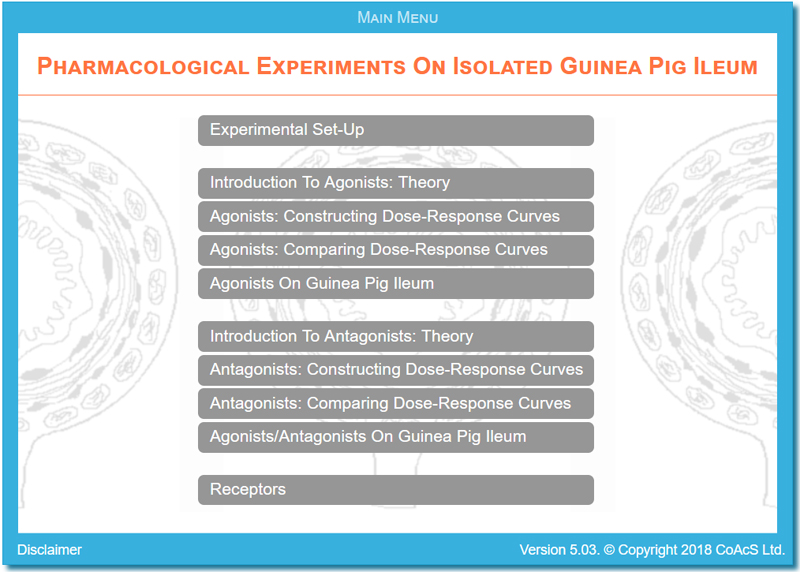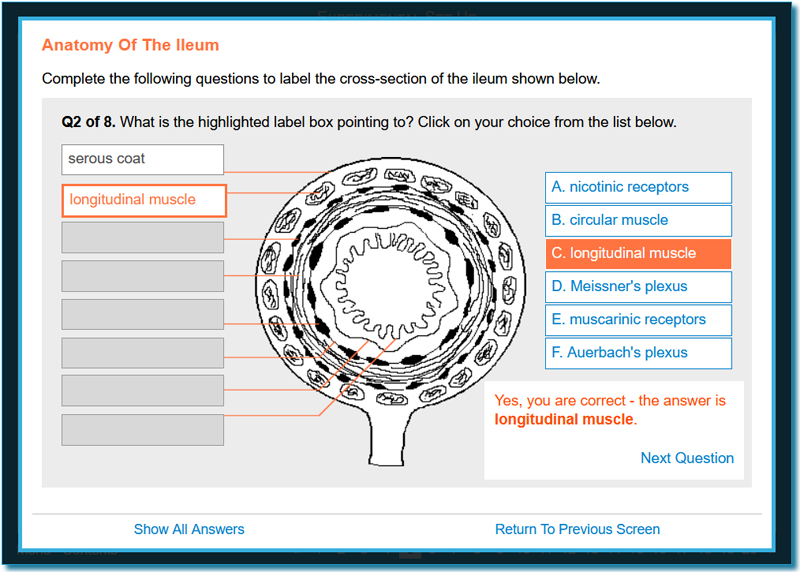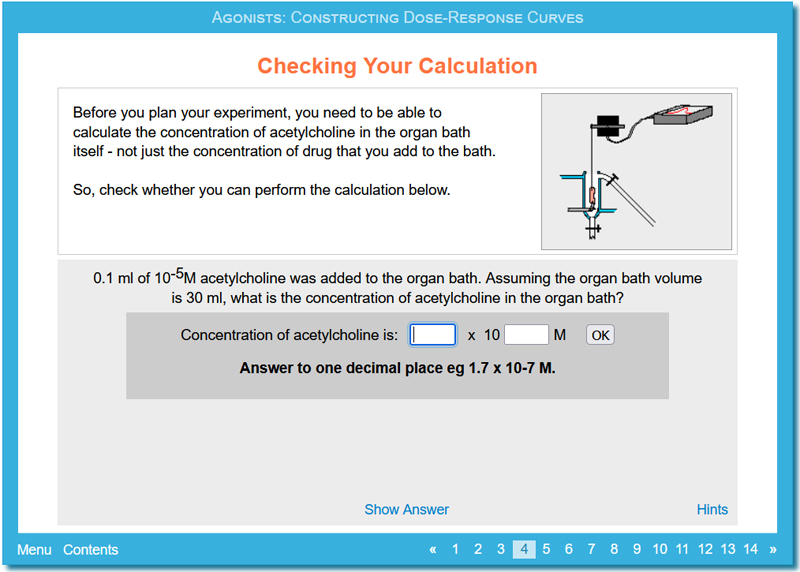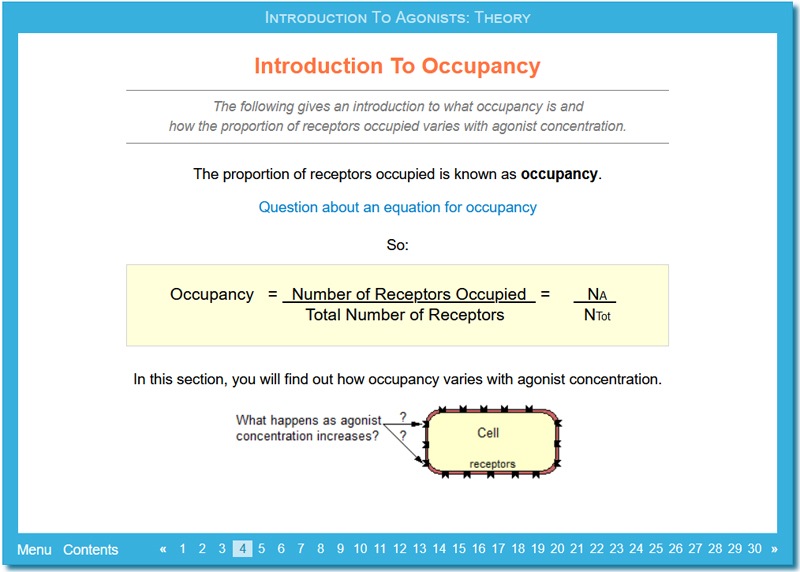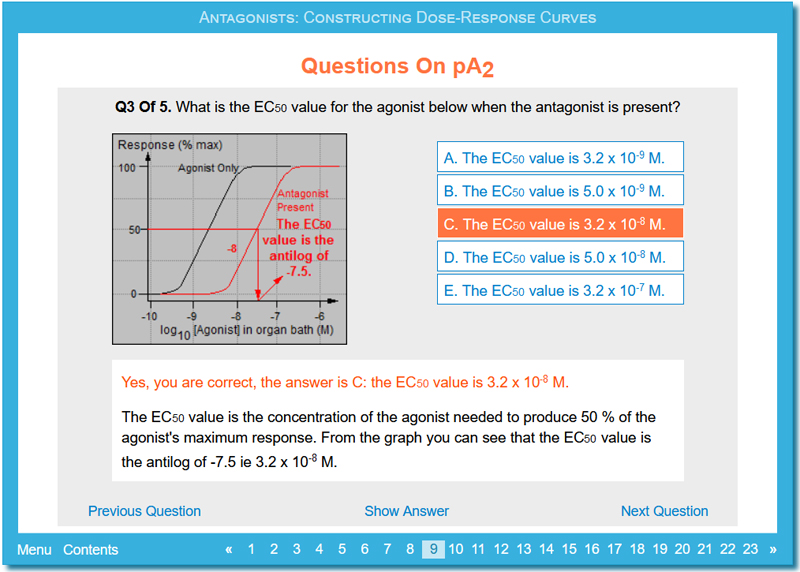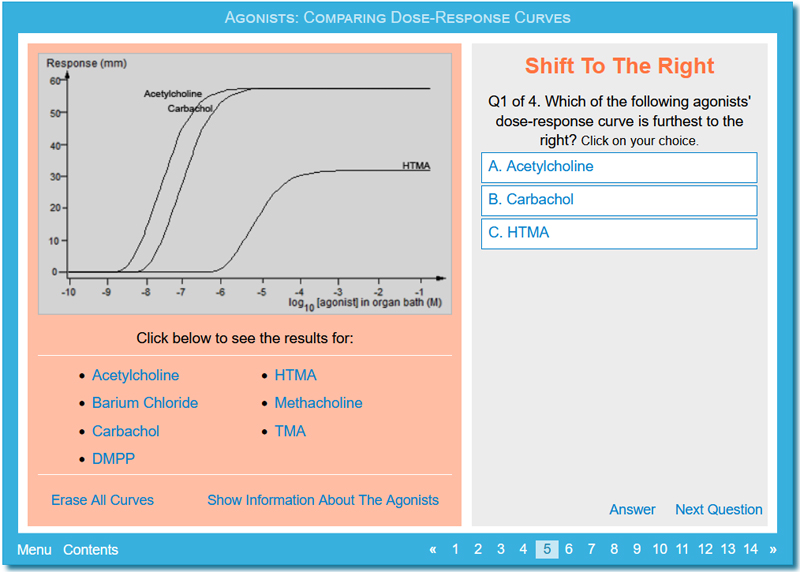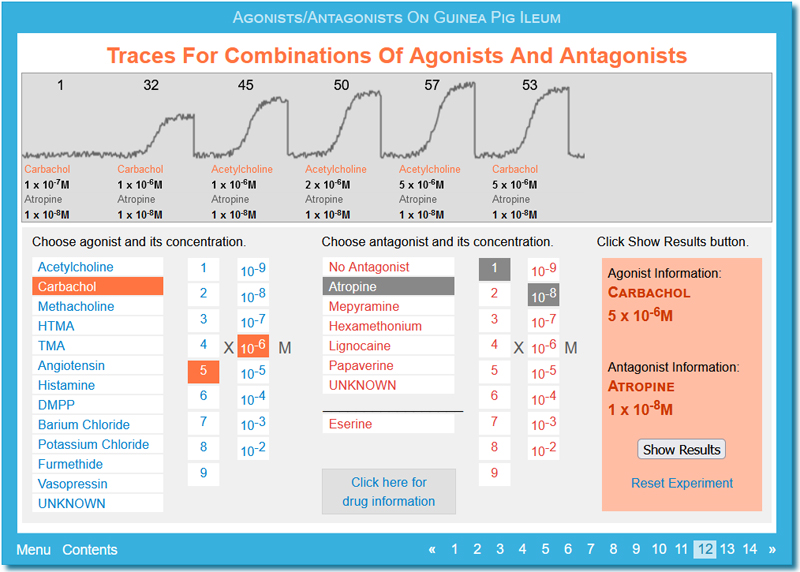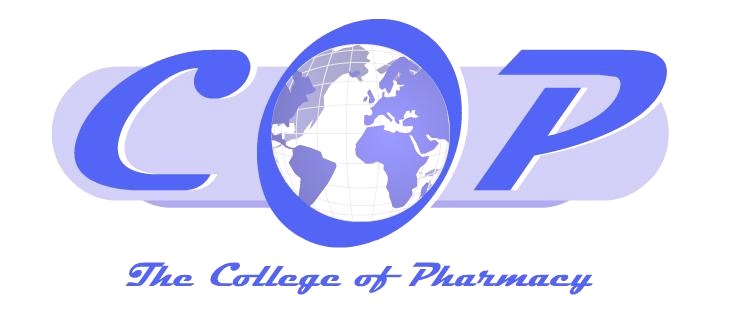Simulations Of Pharmacological Experiments On Isolated Guinea Pig Ileum
This package is a computer simulation programme to teach the effects of drugs and electrical stimulation on the enteric nervous system.
The package covers basic receptor theory, including occupancy and how response size is related to occupancy. The user is introduced to dose-response curves through simulated experiments of the action of drugs on isolated guinea pig ileum.
Dose-response curves found using a range of drugs and combinations of drugs are then compared in order to discuss:
• Full and partial agonists
• Types of antagonism
• The use of agonists/antagonists to show the presence of different receptors
This package also contains an Assessment module with MCQs.
Product Code: COP002
Price: £300.00 p.a. (per institution)
Simulations Of Pharmacological Experiments On Isolated Guinea Pig Ileum covers basic receptor theory, including occupancy and how response size is related to occupancy. The user is introduced to dose-response curves through simulated experiments of the action of drugs on isolated guinea pig ileum. Dose-response curves found using a range of drugs and combinations of drugs are then compared in order to discuss:
- Full and partial agonists
- Types of antagonism
- The use of agonists/antagonists to show the presence of different receptors
By working through the package, the user should be able to design an experiment to find out the pharmacological properties of an unknown drug on the guinea pig ileum i.e. to find out whether the drug is an agonist (full/partial) or an antagonist, and its possible sites of action (including receptors). Thus the user is required to demonstrate an understanding of experimental techniques, receptor theory and knowledge of the structure and pharmacology of the guinea pig ileum.
The user will learn:
- The structure and innervation of the guinea pig ileum
- Equations for occupancy and response
- How to construct dose-response curves (experimental procedure and plotting of results)
- How to interpret dose-response curves and say whether a drug is an agonist (full/partial) or antagonist (if so, what type)
- What pA2 is and how to find it
- How to use agonist/antagonist combinations to find out about receptors and sites of action
CONTENTS OF THE PACKAGE
- Experimental Set-Up
- Introduction To Agonists: Theory
- Agonists: Constructing Dose-Response Curves
- Agonists: Comparing Dose-Response Curves
- Agonists On Guinea Pig Ileum
- Introduction To Antagonists: Theory
- Antagonists: Constructing Dose-Response Curves
- Antagonists: Comparing Dose-Response Curves
- Agonists/Antagonists On Guinea Pig Ileum
- Receptors
The package provides a simulation of the effects of drugs on the guinea pig ileum and allows the user to design experiments to find out the pharmacological properties of unknown drugs on the guinea pig ileum
Pre-requisites: Users need to have no prior knowledge of the guinea pig ileum although a knowledge of basic biology, chemistry and maths, and a knowledge of how to plot graphs, would be helpful.
Audience: Undergraduate students whose course includes simulations of animal experiments (possible courses include pharmacy, pharmacology, biology, physiology).
Time to complete: 2-4 hours or more, depending on how the simulations themselves are used.
“We’ve being using this simulation programme for several years, in the frame of practical courses of pharmacology for pharmacy and master (M1S1-Pharmacology and Toxicology Master) students at the Faculty of Pharmacy of Strasbourg University.
The first parts of the package summarize drug-receptor molecular interactions and allow the students to revise these theoretical notions and to test their knowledge in a more fun way.
The programme then offers a very complete and illustrated overview of the experimental set-up and the possibility to simulate recordings. During our sessions, students are first asked to construct dose-response curves of a given agonist and to determine the pA2 of an antagonist. Once comfortable with the set-up, they are asked to themselves design experiments responding a specific question (for example, to identify the mechanism of action of a given drug). This is very interesting since they have to think about protocols and work independently ; it takes longer, but students can use the package outside class hours once registered, which is a major advantage.”
Nathalie Niederhoffer
Maître de Conférences en Pharmacologie
Faculté de Pharmacie
Université de Strasbourg
Share this page
Related resources
Main CoAcS website

The main CoAcS website explains more about the areas in which we operate including:
- pharmacy education
- healthcare applications to hospitals and pharma
- bespoke software
- pharmaceutical plant design and consultancy
College of Pharmacy (CoP)
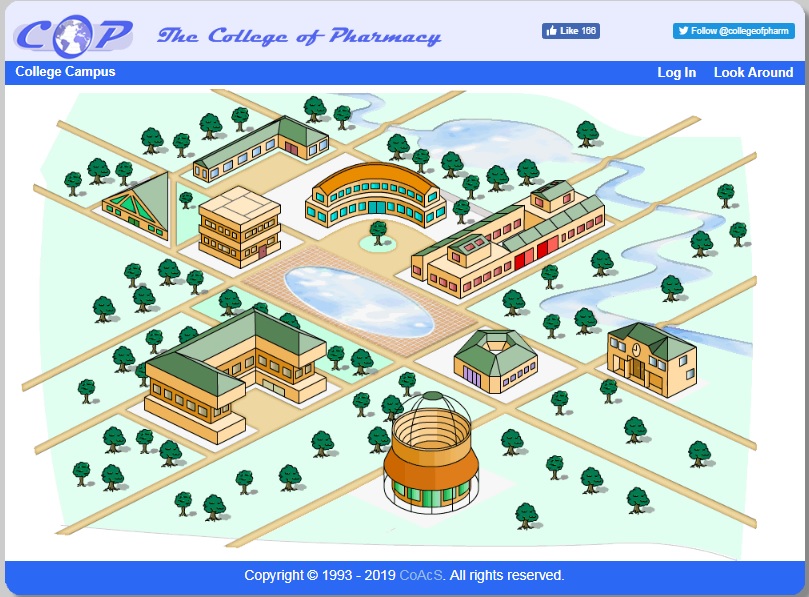
The College of Pharmacy (CoP) website is the gateway to all of our CAL packages. Besides the subscribed pharmacy learning materials, you will also have free access to the:
- museum – containing images of historical documents and pharmacy artifacts
- library – with listings of the latest pharmacy journals and other publications
- lecture theatre – access to many diverse university presentations
- herb garden – to promote the understanding of herbs and medicinal plants and their place in traditional and modern pharmacy
Pharmaceutical Press agents
We are exclusive agents in the Middle East for the Pharmaceutical Press (the publishing arm of the Royal Pharmaceutical Society). We are able to supply countries with invaluable online resources – such as ‘Medicines Complete’. Many other titles are available including:
- the British National Formulary (BNF)
- Stockley’s Drug Interactions
- Martindale’s Complete Drug Reference
Please contact us directly if you wish to arrange a subscription.
